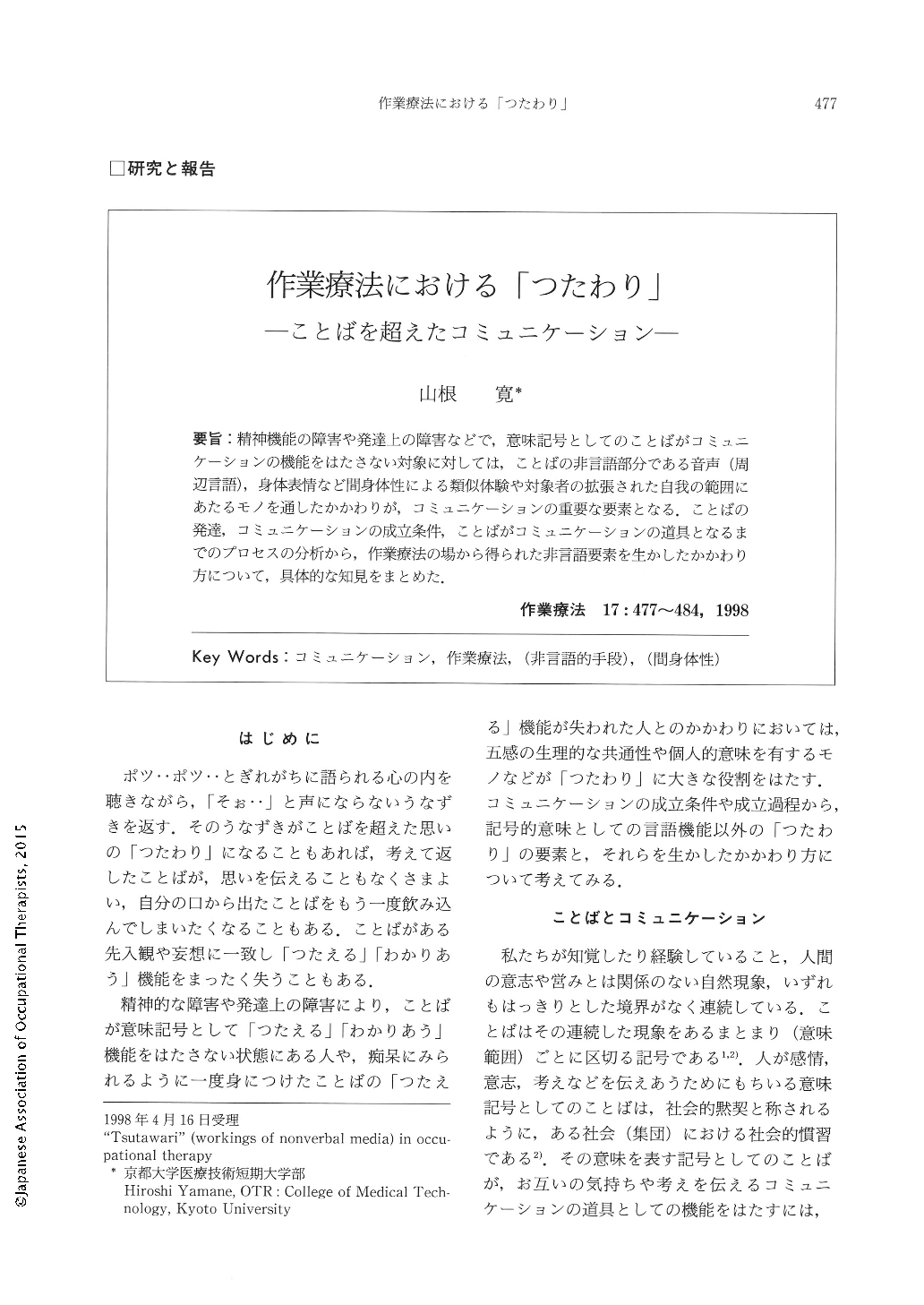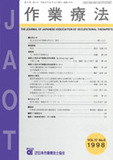Japanese
English
- 販売していません
- Abstract 文献概要
- 1ページ目 Look Inside
- 参考文献 Reference
- サイト内被引用 Cited by
要旨:精神機能の障害や発達上の障害などで,意味記号としてのことばがコミュニケーションの機能をはたさない対象に対しては,ことばの非言語部分である音声(周辺言語),身体表情など間身体性による類似体験や対象者の拡張された自我の範囲にあたるモノを通したかかわりが,コミュニケーションの重要な要素となる.ことばの発達,コミュニケーションの成立条件,ことばがコミュニケーションの道具となるまでのプロセスの分析から,作業療法の場から得られた非言語要素を生かしたかかわり方について,具体的な知見をまとめた.
When we try to communicate with people who have mental disorders such as dementia, schizophrenia, and so on, often the language does not work as a means of communicating, because of the disease condition. The purpose of this study is to examine the process and condition in which language can begin to work as a means of communicating, and to show the techniques of using nonverbal media in communicating with people who have lost their language as a message sign. In occupational therapy, we mainly use the following nonverbal media : (1) paralanguage (nonverbal factor in talking), (2) body language (expression on action and behavior), and (3) objects (one's possession, works and tools). One techniques of using these media are as follows:
1. Observing how to react to stimuli
2. Using the common point of five senses and experiences
3. Catching one's nonverbal expressions
4. Using one's basic data experienced and kept by the five senses in one's life
5. Accepting one's own feelings and adjusting attitude
6. Giving language as if it give objects
7. Communicating through objects

Copyright © 1998, Japanese Association of Occupational Therapists. All rights reserved.


